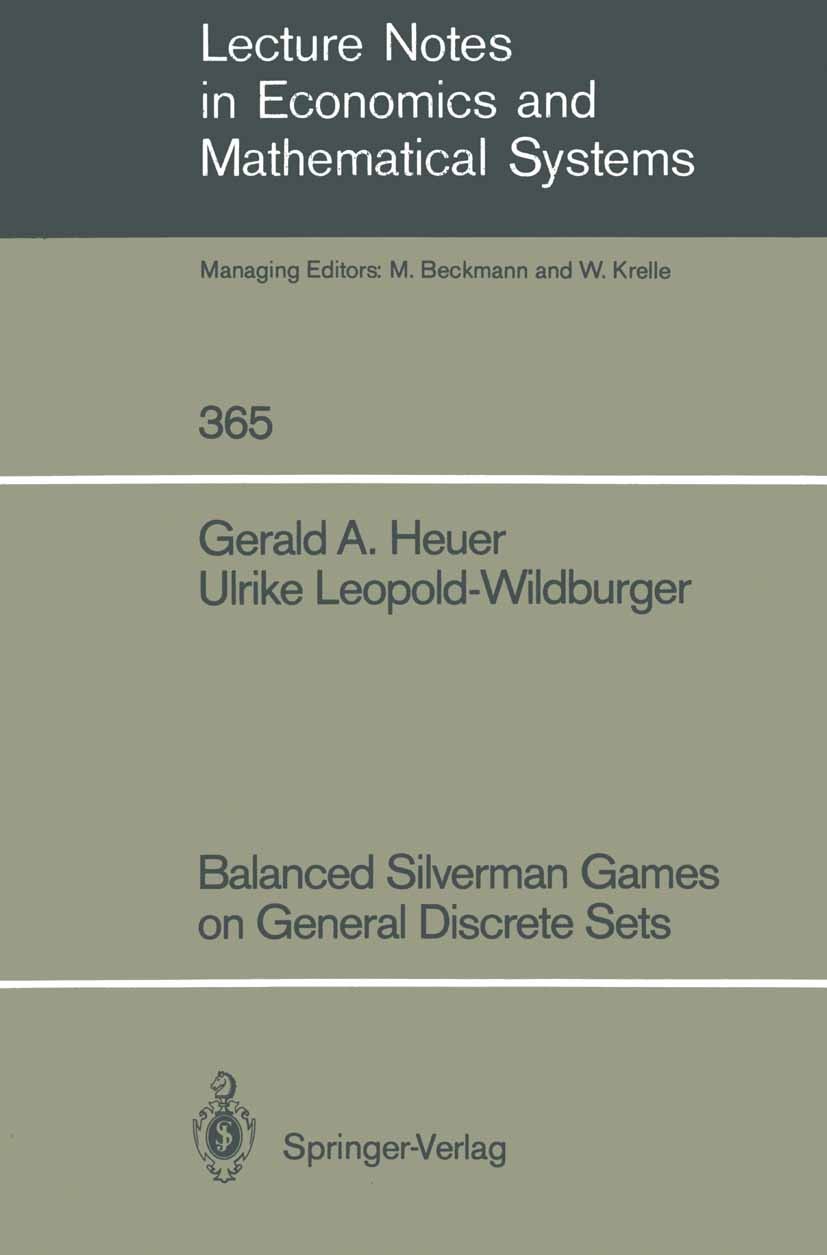| 期刊全稱 | Balanced Silverman Games on General Discrete Sets | | 影響因子2023 | Gerald A. Heuer,Ulrike Leopold-Wildburger | | 視頻video | http://file.papertrans.cn/181/180447/180447.mp4 | | 學(xué)科分類 | Lecture Notes in Economics and Mathematical Systems | | 圖書封面 |  | | 影響因子 | A Silverman game is a two-person zero-sum game defined in terms of two sets S I and S II of positive numbers, and two parameters, the threshold T > 1 and the penalty v > 0. Players I and II independently choose numbers from S I and S II, respectively. The higher number wins 1, unless it is at least T times as large as the other, in which case it loses v. Equal numbers tie. Such a game might be used to model various bidding or spending situations in which within some bounds the higher bidder or bigger spender wins, but loses if it is overdone. Such situations may include spending on armaments, advertising spending or sealed bids in an auction. Previous work has dealt mainly with special cases. In this work recent progress for arbitrary discrete sets S I and S II is presented. Under quite general conditions, these games reduce to finite matrix games. A large class of games are completely determined by the diagonal of the matrix, and it is shown how the great majority of these appear to have unique optimal strategies. The work is accessible to all who are familiar with basic noncooperative game theory. | | Pindex | Book 1991 |
The information of publication is updating

|
|
 |Archiver|手機版|小黑屋|
派博傳思國際
( 京公網(wǎng)安備110108008328)
GMT+8, 2025-10-12 13:06
|Archiver|手機版|小黑屋|
派博傳思國際
( 京公網(wǎng)安備110108008328)
GMT+8, 2025-10-12 13:06


